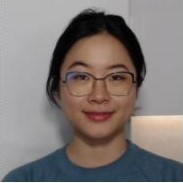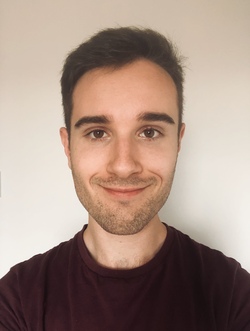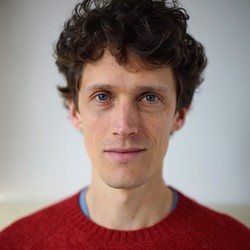Group
Current Frost group members
Pranay Venkatesh (Visiting Graduate Researcher)
Non-adiabatic dynamics of polaron and excitons in organic materials using real-time path integral methods developed by Makri and co-workers
Twitter : @chemicalfiend8
Lucius Liu (PhD March 2022–)
Lucius’ main project is in fitting quantum mechanical surrogate models. This is where we bake the physics in the machine learning model, such as by using a tight-binding ansatz, while empirically twiddling the parameters to get good agreement with some higher quality reference.
Keerati ‘PK’ Keeratikarn (PhD April 2021–)
Keerati’s initial project is looking at building (anharmonic) potential energy surfaces with function approximation methods (machine learning). The intent is to build a surrogate model with a few electronic structure calculations, and then use this as the basis for many-body phonon perturbation-theory, enabling much larger systems to be treated.
Hanbo Yang (PhD Oct 2020–)

Hanbo is working on molecular materials for the up-conversion of light. By absorbing two lower energy photons (red), combining the energy and emitting these as a higher energy photon, you can increase the efficiency of a solar cell device. This also means that you can make use of higher bandgap semiconductors for your solar cell. There are a lot of earth abundant materials that can make a high bandgap solar cell (such as inorganic nitrides and oxides, and organic homopolymers), and these materials tend to be highly stable.
However there is a long way to go until we have a working technology! A key issue is that one needs to maintain the excited state for a long enough time that it has a chance of meeting another excited state. As a dye molecule in direct sunshine absorbs about one photon a second, and the excited state typically decays away in less than a nanosecond (one billionth of a second), there is a very large chasm to bridge.
Hanbo’s initial project is joint computational and experimental, looking at some new organic polymers synthesised in the Hugo Bronstein group. We are attempting to both measure and model the time-resolved decay routes of the materials.
Twitter: @Hanbo_315
Hanbo’s 3-minute video summary from September 2021:

Bradley A.A. Martin (PhD Oct 2020–)

Brad comes from a theoretical physics background. His first project is in extending the Feynman variational path-integral approach to the polaron problem, working on the PolaronMobility.jl codes.
Why should we care about polarons? Well, it’s become increasingly apparent that polar scattering dominates (and therefore limits) charge-carrier mobility in multicomponent semiconductors. These semiconductors are increasingly important for technical application. The path-integral approach provides a fully quantum-mechanic solution to this scattering (within certain provisos, natch!). With it you have a fully predictive model of charge-carrier mobility, with no empirical parameters.
Twitter: @Neutrino155
Brad’s 3-minute video summary from September 2021:

Brad is funded by an EPSRC Doctoral Training Award.
Jack Coker (PhD March 2020–)
Jack’s project is in pushing the development of charge-carrier simulations in the hopping regime. This is most relevant for disordered organic materials, where the charges are localised as small polarons and move (relatively slowly!) in a series of thermally activated ‘hops’.
Jarvist Moore Frost (PhD Imperial 2012)

Jarvist approached computational physics back to front, in that after being introduced to LOGO in the reception class of his primary school on a creaky old BBC Micro, he learnt a lot of his higher physics by reference to how it could be expressed on a computer. His MSci project (2005–2006) was under Prof. Geoff New on modelling ‘fractal light’ as generating in a highly magnifying laser cavity with a polygonal aperture; a youtube video Hi-Def, but without annotation, working(ish) code and MSci report are available. His PhD (2007–2012) was supervised by Prof. Jenny Nelson FRS and Prof. Donal Bradley FRS CBE, and supported by BP Solar and an EPSRC DTP award.
Jarv got into research on photovoltaics for the environmental reason of trying to avert climate change. This is not because he particularly cares about polar bears or coral reefs, but because he likes a world in which the climate is stable enough to grow enough food to eat. He is deeply cynical about how useful any of his research actually is, and is quite generally fearful that much renewable energy research is effectively a form of greenwashing, allowing society to further procrastinate from making the necessary changes and investment in the hope of some future scientific-technological ‘deus ex machina’ to allow us to continue leading our energy profligate lives without trashing the planet. However, as he is even worse at, and more cynical of, politics, he continues to apply himself to this long-odds technological bet.
Jarv is a strong proponent of open-science, open-source, and open-access.
Outside academics Jarvist mainly looks after T1 (born Nov 2018) and T2 (born Nov 2020).. He still goes cycling occasionally, and used to spend a lot of his time caving, diving and sailing. Jarv was hit by lightning at around 8:20 PM on 12th August 2017 and did not die.
Alumni (ex members)
Nicholas Siemmons (PhD Oct 2018–2023)
The project which I’m working on with Nick is in using empirical molecular dynamics to understand the ‘polymer battery’.
Shirui Wang (Nanomaterials MRes 2022)
“Computational insights into emerging chalcogenide perovskite photovoltaics”
- supervised with Alex Ganose.
Li Zhenghan (SEM-MRes 2022)
“Simulating charge transfer and recombination at an upconverting organic semiconductor interface”.
Alexandre Cherrier & Alexandre Bec (BSc Physics two-term project October 2022–)
Polarons and band tails in semiconductors.
YC Wong and Logan Filipovich (MSci Physics June 2022–)
Path integral Monte-Carlo (PIMC) for the Polaron problem.
Xiaoyi Yang and Daryl Y Lee Kai Yuen (MSci Physics June 2022–)
Diagrammatic Monte-Carlo (DiagMC) for the Polaron problem.
Haonan Chen (Machine Learning and Big Data MRes, Jan-Sept 2022)
Haonan is investigating the use of graph neural networks in predicting structure-property relationships in small molecule drug design.
Beatriz Vina Bausa (Physics MSci two-term project, Oct 2021-April 2022)
Beatriz is investigating the polaron behaviour of a set of polar tetrahedral semiconductors, and in halide perovskite semiconductors, by characterising the materials with plane-wave density functional theory in VASP, and then using group codes which implement the Feynman variational approach.
Yiqiu Zhang & Yanlin ‘Philip’ Chen (MSci Project 2020–2021)
Yiqiu and Philip (Yanlin) worked on ‘Blockbuster drug design by blocking transition states’. They implemented the Grant1994 shape overlap algorithm, using the open-source C++ ‘shape-it’ codebase as a reference and a cross-check. They extended Grant’s method by adding spherical harmonics to the metric,
Harvey Cao & Max Ramsay King (MSci Project 2020–2021)
Harvey and Max were interested in ‘quantum’ computing, and applying the variational quantum eigensolver to quantum chemistry problems. They ran a VQE quantum simulator on classical hardware, and investigated methods of improving the efficiency on near-term noisy intermediate-scale quantum (NISQ) computers.
Leonard Logaric & Tilman Roeder (BSc two-term project 2019–2020)
Leonard and Tilman built a tight-binding software that was automatically differentiable. This means that gradients could be back-propagated from the outputs of the model, all the way to the analytic form of the tight-binding model overlap integrals. Using this, they fitted models to synthetic data from standard density functional theory calculations on the same system. By comparison with state of the art black-box (no gradient) optimisation methods, they showed that the model was more accurate with fewer data points.
Theo Saporiti & Timothée Dao (BSc two-term project 2019–2020)
Theo and Timothée wrote a path-integral Monte-Carlo code. They applied this to the study of the hydrogen delocalisation in water ice, and investigated how the nuclear quantum effect changes the free energy of the ice.
Yulin Chen & Matthew Yick (BSc one-term project 2019)
Yulin and Matthew used the Fromage software to calculate the nature and binding energy of excitons in organic electronic crystals. They compared these results to effective-mass based models (the Wannier exciton).